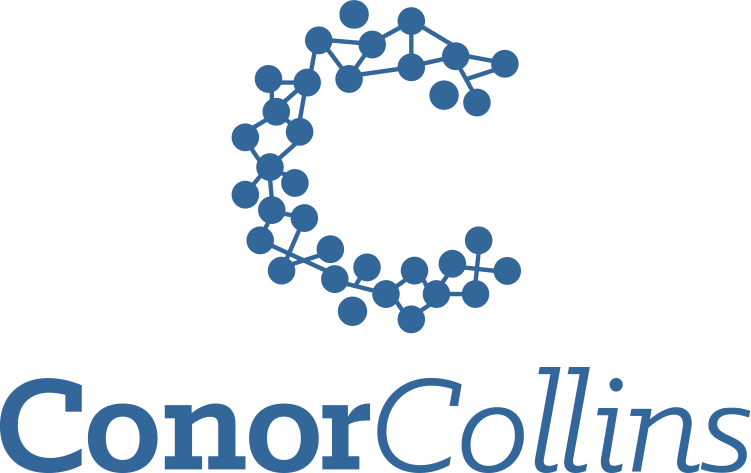When I first began my educational journey in the world of concussion, a consistent message that was taught was the importance of careful communication. A common message was that people needed to be educated on what happens in a concussion, in order to effectively recover from their injury. This included telling them that a concussion is a brain injury, along with an often lengthly physiological explanation in an attempt to contextualize their symptoms.
Being new to the field and eager to help as many people as I could, I rehearsed my educational speech over and over. I refined it until I felt it was my best 2-3 minute explanation of what happens in a concussion. It was going to be amazing and I believed that I could single-handedly help everyone that came into my office through this approach.
This speech failed miserably.
I could see the anxiety grow every time I recited my speech. Their list of questions increased and frankly, it was counterproductive. I refined it, and I revisited what I was taught, and the importance of the information I should deliver; but it continued to fail. Shortly after, I abandoned this method.
Communication, specifically how therapists interact with people in pain or with concerning symptoms, has become an important topic of research in the field of complementary medicine. A concussion is no different, as the myriad of symptoms felt can often be very worrying for the person experiencing them. As I continue my journey on refining the nuances of communication within a therapeutic space, I seek out research from a variety of sources.
I recently came across a paper (Togher, 2012) entitled, “Improving Communication for People with Brain Injury in the 21st Century: The Value of Collaboration”. It made me reflect on how we spend a lot of time focusing on our own communication as therapists, while forgetting that there may be limitations in communication on the client’s behalf. This may be as simple as challenges in finding descriptive words for what they are experiencing, or as complex as the inability to produce language.
The research discusses two approaches that help improve communication for those with traumatic brain injuries. First, training in social skills is outlined. Second, training of partners and caregivers on how to cope with difficult behaviours related to concussion. To evaluate the approach, a 3-arm study was conducted on how communication can help manage symptoms related to severe traumatic brain injury. It should be noted that while a concussion is a traumatic brain injury, it falls in the “mild traumatic brain injury” category. Many of the participants in this study had aphasia and as a result, had difficulty with language expression and/or comprehension.
During the study, non-randomized individuals were placed into one of three groups. In Group 1, individuals who had suffered the injury received communication training; Group 2 had the injured person and partner or caregiver present; and Group 3 was a delayed treatment control group. The primary question to be answered in this research was “does including a partner in strategies for everyday living provide additional benefit, rather than training communication strategies to the person who suffered the injury alone”?
Group therapy sessions were delivered in groups of 4-5 participants for 2.5 hours in length. In addition, each participant received one 1-hour therapy session per week which focused on individual struggles and hurdles surrounding their injury. Group 2 received the same treatment interventions with the only difference being the absence of their supportive partner or caregiver.
The overarching theme of these sessions was collaboration and providing positive emotional support. In Table 3 of the paper, Togher provides examples of collaborative and non-collaborative communication styles (Togher et al., 2012; Ylvisaker & Feeney, 1998). I have outlined a few of these below:
Positive collaboration
- Collaborative intent. Example: “Let’s think about it”.
- Cognitive support. Example: the use of organizational supports by the caregiver (calendars, etc.)
- Emotional support. Example: acknowledgment of difficulties in injury or recovery
- Positive Questions. Example: “What do you need to accomplish that?”
- Collaborative Turn-Taking. Example: when a caregiver, assists in expressing thoughts when the injured person is struggling to find the words.
Non-Collaborative Communication
- Non-collaborative. Example: demanding, lack of understanding, and lack of enthusiasm.
- Lack of cognitive support. Example: corrects in a punishing manner.
- Lack of emotional support. Example: fails to acknowledge the difficulty of daily tasks.
- Negative Question. Example: “How are you going to do that?”
- Non-collaborative Turn-Taking. Example: interrupting the injured person’s processes and statements.
The results of this study indicated positive outcomes for those attending communication sessions with a caregiver rather than being alone. This was evidenced by “blinded ratings of the participation of the person with brain injury during conversation, and also the degree to which their partner facilitated the interaction. The training programme was successful due to the increased engagement of the communication partner with the explicit acknowledgement that they could make a significant contribution to the way their relative with TBI communicated” (Togher, 2012).
One of the things I have made a conscious effort to do when communicating with people who have suffered a concussion is asking them about support systems. While I have been good at asking this question, I have failed in my understanding of the nuances of what this question means. Many of the people that come to see me are alone, if they come with a partner, parent, or friend they are often dropped off and picked up. The exception to this is children who often have one or both parents present.
I have observed often interesting dynamics of communication between loved ones and the injured person. It’s hard for me when I see people who are struggling with symptoms, looking for support and not receiving it. I often wonder if forming a support group in conjunction with a local therapist, or providing material on partner support and communication may be helpful or harmful.
When appointments become tense or stressful between parties present, I often try to reframe the conservation and focus on the positives of the interaction at hand. Admittedly, while I am conscious of this I still don’t think I am very good at it. This is difficult and stressful for even the most seasoned clinicians.
Reading Togher’s paper is a reminder that my discussion around support systems needs to be better. I am not sure exactly what that looks like yet, but I will be revisiting it, as I usually do.
Whether it’s a concussion, injury, or disease how we communicate matters. At the end of the day, going into each appointment with an empathetic and open mind may be all we can do. From there, as the sea of communication unfolds just ride the wave.
If you’re looking to grow your understanding of concussions and how to assess, treat, and rehabilitate this often daunting injury- registration is now open for the October 2022 course! Link here:
https://conorpcollins.com/courses/
References
1. Togher L., (2012). Improving Communication for People with Brain Injury in the 21st Century: The Value of Collaboration. Brain Impairment. 14(1), 130-138. doi: https://doi.org/10.1016/BRlmp.2013.3
2. Togher, L., Power, E., Riedijk, R., McDonald, S., & Tate, R. (2012). An exploration of participant experience of communication training programs for people with traumatic brain injury and their communication partners. Disability and Rehabilitation, 34(18), 1562–1574. doi: 10.3109/09638288.2012.656788
3. Ylvisaker, M., & Feeney, T. (1998). Collaborative brain injury intervention: Positive everyday routines. San Diego: Singular Publishing Group.
About the Author
Conor’s Sports Injury Therapy background has earned him a growing reputation in the professional sports industry. Conor has consulted for athletes in the NHL, NCAA and IHHF and he was a therapist at the 2015 Pan AM games in Toronto.
When he’s not at the clinic, Conor’s teaching at Mohawk College in the Massage Therapy program or teaching his course “Understanding the Complexity of Concussion” internationally. Conor has written for a variety of magazine and news outlets, as well as participated as an expert at a number of internationally-recognized conferences.



Recent Comments